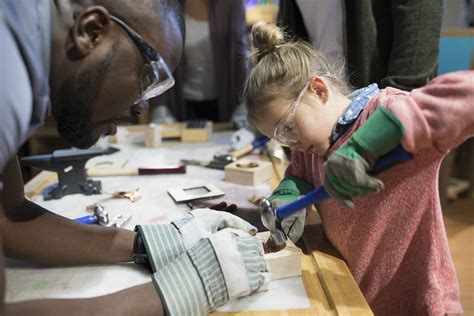Choosing a captivating theme
Choosing a captivating theme is an essential aspect of planning a successful workshop. The theme sets the overall tone and direction for the workshop and helps capture the attention and interest of potential participants. When selecting a theme, it is important to consider the target audience and their specific interests and needs. The theme should be relevant, engaging, and relatable to the participants.
One way to ensure that the theme is captivating is by conducting thorough research and staying updated with current trends and topics. This will help in exploring unique and unconventional themes that have not been extensively covered in previous workshops. By offering something new and different, participants are more likely to be drawn to the workshop.
Another important factor to consider when choosing a theme is its flexibility and adaptability. The theme should be broad enough to accommodate a wide range of subtopics and activities, allowing for diversity and variety throughout the workshop. This will keep the participants engaged and prevent them from getting bored or feeling like they are learning the same thing repeatedly.
Creating an engaging workshop schedule
When it comes to creating an engaging workshop schedule, there are several important factors to consider. The schedule sets the tone for the entire workshop and plays a major role in the overall success of the event. A well-designed schedule not only helps to keep participants organized and on track, but also provides a framework for delivering content and facilitating interactive activities. In this blog post, we will explore some key strategies for creating an engaging workshop schedule that will captivate participants and enhance their learning experience.
List of Strategies for Creating an Engaging Workshop Schedule:
- Understand the Goals and Objectives: Before diving into the schedule planning process, it is essential to clearly understand the goals and objectives of the workshop. This will help in shaping the content and activities that will be included in the schedule.
- Segment the Content: Breaking down the workshop content into smaller, manageable segments can help participants stay focused and engaged. Consider dividing the workshop into sessions or modules based on different topics or activities.
- Include Variety: Keeping the schedule diverse and incorporating different types of activities can help maintain participants’ interest throughout the workshop. Mix lectures, group discussions, hands-on exercises, and interactive games to create a dynamic and engaging learning environment.
Table: Sample Workshop Schedule
| Time | Activity |
|---|---|
| 9:00 AM – 9:30 AM | Welcome and Introduction |
| 9:30 AM – 10:30 AM | Lecture: Workshop Objectives and Expectations |
| 10:30 AM – 11:00 AM | Coffee Break |
| 11:00 AM – 12:30 PM | Group Discussion: Sharing Experiences |
| 12:30 PM – 1:30 PM | Lunch Break |
| 1:30 PM – 3:30 PM | Hands-On Activity: Applying Concepts |
| 3:30 PM – 4:00 PM | Wrap-Up and Q&A Session |
Evaluate and Adapt: After conducting the workshop, it is crucial to evaluate the effectiveness of the schedule. Seek feedback from participants and make necessary adjustments for future workshops. Continuously improving the schedule based on participants’ needs and preferences will ensure a more engaging and impactful learning experience.
By following these strategies and creating a well-thought-out workshop schedule, facilitators can maximize participant engagement and create an environment conducive to active learning and knowledge retention.
Selecting appropriate materials and resources
When it comes to conducting a successful workshop, selecting appropriate materials and resources plays a crucial role. The materials and resources you choose can significantly impact the learning experience and overall engagement of the participants. It is essential to carefully consider the objectives of your workshop, the needs of your audience, and the type of activities you plan to incorporate. Here are some key factors to consider when selecting materials and resources for your workshop.
Relevance: The materials and resources you select should be relevant to the topic and objectives of your workshop. They should align with the learning outcomes you wish to achieve and provide valuable information or tools that participants can apply in their own lives or work.
Accessibility: It is important to choose materials and resources that are easily accessible to all participants. This includes considering factors such as language proficiency, reading level, and any potential physical or cognitive limitations. Ensure that the materials are available in different formats or provide alternative options to accommodate diverse learning needs.
Engagement: Select materials and resources that are engaging and interactive to maximize participant involvement. This could include visual aids, hands-on activities, multimedia content, or interactive technology. Engaging materials not only enhance the learning experience but also help participants retain information better.
By considering these factors, you can ensure that the materials and resources you select for your workshop are effective in facilitating learning and creating an engaging experience for all participants.
- Relevance: Ensure that the materials and resources align with the workshop’s topic and objectives.
- Accessibility: Consider the needs of all participants and make sure the materials are easily accessible to everyone.
- Engagement: Choose materials and resources that are interactive and captivating to enhance participant involvement.
| Pros | Cons |
|---|---|
| Relevant materials enhance learning outcomes. | Not all participants may have access to certain resources. |
| Accessibly materials accommodate diverse learning needs. | Engaging materials may require additional preparation or resources. |
| Engaging resources help participants retain information. | Choosing appropriate materials and resources requires thorough research and evaluation. |
Promoting the workshop effectively
The success of a workshop heavily relies on effective promotion and marketing strategies. Promoting a workshop effectively is crucial to attract the target audience and ensure maximum participation. There are several key factors to consider when planning your workshop promotion.
Firstly, it is important to identify your target audience. Who are the individuals that will benefit the most from attending your workshop? Understanding your target audience demographics, interests, and needs will help you tailor your promotional materials and messages to effectively reach and engage them.
Once you have identified your target audience, you can begin developing compelling and eye-catching promotional materials. Utilizing a captivating theme can grab the attention of potential participants and generate interest in your workshop. Incorporate catchy slogans or highlight key benefits of attending your workshop to entice potential attendees.
To promote your workshop effectively, it is also essential to utilize various channels and platforms. Utilize social media platforms such as Facebook, Twitter, and LinkedIn to reach a broader audience and generate buzz around your workshop. Additionally, consider partnering with relevant organizations or influencers who can help spread the word about your workshop to their network.
An effective promotion strategy involves maintaining consistent communication with your audience. Send out regular newsletters or emails leading up to the workshop to provide additional information, updates, and reminders. Consider offering early-bird discounts or incentives to encourage early registration and create a sense of urgency.
Lastly, don’t underestimate the power of word-of-mouth marketing. Encourage participants to share their excitement and expectations about the workshop with their friends, colleagues, and social media connections. Providing participants with a positive and memorable experience during the workshop will increase the likelihood of them recommending it to others.
In conclusion, promoting a workshop effectively is vital to ensure maximum participation and success. By identifying your target audience, utilizing captivating themes, and effectively utilizing various marketing channels, you can create a buzz around your workshop and generate interest. Consistent communication and word-of-mouth marketing play key roles in maintaining engagement and expanding your workshop’s reach. By implementing these strategies, you can effectively promote your workshop and create a memorable experience for all participants.
Providing a safe and interactive learning environment
Creating a safe and interactive learning environment is crucial for any workshop or educational setting. This environment not only promotes effective learning but also ensures the well-being and engagement of the participants. There are several key elements to consider when providing such an environment.
Physical Safety: One of the primary concerns in creating a safe learning environment is ensuring physical safety. This can be achieved by conducting a thorough risk assessment of the workshop space. Identify any potential hazards and take necessary measures to eliminate or minimize them. This could include ensuring proper lighting, clear pathways, and well-maintained equipment.
Emotional Safety: In addition to physical safety, creating an emotionally safe environment is equally important. Participants should feel comfortable expressing their thoughts, ideas, and concerns without fear of judgment or criticism. Encourage open communication, active listening, and respect for diverse perspectives. By fostering a supportive and inclusive atmosphere, participants are more likely to engage in meaningful discussions and collaborative activities.
Interactive Learning: An interactive learning environment encourages active participation and engagement. Incorporate interactive activities such as group discussions, hands-on exercises, and problem-solving tasks. This not only promotes a deeper understanding of the subject matter but also allows participants to learn from each other. By actively involving participants in the learning process, you can create a dynamic and enriching workshop experience.
By prioritizing the safety and interactivity of the learning environment, you are setting the stage for a successful workshop. Participants will feel valued, supported, and motivated to actively engage in the learning process. Remember to regularly assess and improve the workshop experience based on participant feedback and observations. With a safe and interactive learning environment, you can create a memorable and impactful workshop for all.
Encouraging active participation and creativity
Encouraging active participation and creativity is essential in creating an engaging and dynamic learning experience. By fostering an environment that encourages students to actively engage in the workshop, we can enhance their understanding and retention of the material. Additionally, promoting creativity helps to ignite students’ imagination and allows for unique solutions and approaches to problem-solving. Here are some effective strategies to encourage active participation and foster creativity:
1. Set clear expectations: Clearly communicate to participants the level of participation and creativity you expect from them. Let them know that their input and ideas are valued and encouraged throughout the workshop.
2. Provide opportunities for collaboration: Encourage participants to work together and share their ideas and perspectives. Create group activities and discussions that promote collaboration and allow for different viewpoints to be heard.
3. Incorporate interactive and hands-on activities: Use interactive exercises, such as role-plays, simulations, or hands-on experiments, to actively engage participants in the learning process. These activities not only encourage participation but also stimulate creativity by allowing participants to think outside the box.
4. Offer choices and options: Provide participants with options and choices whenever possible. This empowers them to take ownership of their learning and encourages them to explore their own interests and ideas.
5. Celebrate and recognize creativity: Acknowledge and celebrate participants’ creative ideas and solutions. This can be done through verbal praise, certificates, or showcasing their work. By doing so, participants are motivated to continue thinking creatively and actively participating.
List of strategies to encourage active participation and creativity:
- Set clear expectations
- Provide opportunities for collaboration
- Incorporate interactive and hands-on activities
- Offer choices and options
- Celebrate and recognize creativity
Table showcasing the impact of encouraging active participation and creativity:
| Benefits | Examples |
|---|---|
| Enhanced understanding | Participants actively discussing and dissecting the material |
| Increased retention | Participants applying concepts through hands-on activities |
| Improved problem-solving skills | Participants generating unique solutions through creative thinking |
| Positive learning experience | Participants feeling valued and engaged throughout the workshop |
Evaluating and improving the workshop experience
When it comes to conducting workshops, evaluation plays a crucial role in understanding the effectiveness of the workshop and identifying areas for improvement. Evaluating the workshop experience not only helps the facilitators gauge the impact of their efforts but also allows them to make necessary adjustments to make future workshops even better.
There are several ways to evaluate a workshop. One of the most common methods is using feedback forms. These forms provide participants with an opportunity to express their thoughts and opinions about various aspects of the workshop, such as the content, delivery, and organization. It is important to create well-designed feedback forms that include both closed-ended questions (such as rating scales) and open-ended questions (that allow participants to provide detailed feedback).
- Feedback forms: Set up feedback forms that include both closed-ended and open-ended questions to gather participants’ opinions on the workshop.
- Observation: Observe the participants’ engagement, interaction, and overall experience during the workshop. Take note of any particular activities or sessions that received a positive or negative response.
- Post-workshop surveys: Follow-up with participants after the workshop through online surveys or interviews to gather more in-depth feedback about their experience and suggestions for improvement.
Once the evaluation process is complete, it is crucial to analyze the feedback gathered and identify any patterns or common themes. This analysis will help in understanding what worked well and what can be improved in future workshops. It is important to pay attention to both positive and negative feedback, as it offers valuable insights for enhancing the workshop experience.
| Key Takeaways: |
|---|
| Evaluation helps in understanding the effectiveness of a workshop. |
| Feedback forms, observations, and post-workshop surveys are effective evaluation methods. |
| Analyzing feedback helps identify areas of improvement. |
Frequently Asked Questions
Question 1: How do I choose a captivating theme for my workshop?
When choosing a captivating theme for your workshop, consider your target audience, their interests, and current trends. Brainstorm ideas, conduct research, and think about what topics would resonate with your participants and provide value to them.
Question 2: How can I create an engaging workshop schedule?
To create an engaging workshop schedule, start by defining clear objectives and outcomes for each session. Break down the content into manageable chunks and include a mix of interactive activities, group discussions, and hands-on exercises. Allow for breaks and time for participants to reflect on what they have learned.
Question 3: What materials and resources should I select for my workshop?
When selecting materials and resources for your workshop, consider the content and objectives. Choose materials that are relevant, up-to-date, and easy to understand. This could include presentation slides, handouts, case studies, videos, and interactive tools. Make sure to also have any necessary equipment or technology prepared in advance.
Question 4: How can I effectively promote my workshop?
To effectively promote your workshop, start by identifying your target audience and the channels they are most likely to use. Utilize social media platforms, email marketing, and your website to spread the word. Offer early bird discounts or incentives to encourage registration, and consider collaborating with relevant organizations or influencers to extend your reach.
Question 5: How can I provide a safe and interactive learning environment?
To provide a safe and interactive learning environment, set ground rules at the beginning of the workshop and create a positive and inclusive atmosphere. Encourage respectful communication, active listening, and the sharing of ideas. Incorporate icebreaker activities and team-building exercises to foster connection and collaboration among participants.
Question 6: How can I encourage active participation and creativity during the workshop?
To encourage active participation and creativity during the workshop, create opportunities for hands-on learning, group discussions, and problem-solving activities. Provide spaces for participants to share their thoughts, ask questions, and contribute their ideas. Incorporate games, brainstorming sessions, and visual aids to inspire creativity and engagement.
Question 7: How can I evaluate and improve the workshop experience?
To evaluate and improve the workshop experience, collect feedback from participants through surveys or post-workshop evaluations. Analyze the feedback to identify areas of strength and areas that need improvement. Use this feedback to make necessary adjustments to the content, format, or delivery of future workshops. Continuously seek to enhance the learning experience based on participant feedback.





